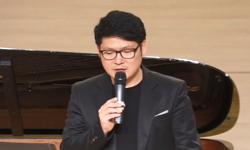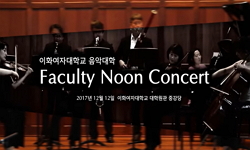클라리넷은 17세기 이전부터 유럽 음악에 사용되어 온 다른 관악기들과는 달리 18세기 말 혹은 19세기에 접어들 무렵에야 대중적으로 알려지기 시작하여 비교적 짧은 역사를 지니고 있다. 18...
http://chineseinput.net/에서 pinyin(병음)방식으로 중국어를 변환할 수 있습니다.
변환된 중국어를 복사하여 사용하시면 됩니다.
- 中文 을 입력하시려면 zhongwen을 입력하시고 space를누르시면됩니다.
- 北京 을 입력하시려면 beijing을 입력하시고 space를 누르시면 됩니다.
https://www.riss.kr/link?id=T15902729
- 저자
-
발행사항
서울 : 동덕여자대학교, 2021
-
학위논문사항
학위논문(박사)-- 동덕여자대학교 대학원 음악학과 2021. 8
-
발행연도
2021
-
작성언어
한국어
- 주제어
-
KDC
678.52 판사항(6)
-
발행국(도시)
서울
-
기타서명
Acceptance of Clarinet in the Mannheim School: In the Case of Johann Stamitz's Symphony
-
형태사항
viii, 105 p. : 삽화 ; 26 cm.
-
일반주기명
동덕여자대학교 논문은 저작권에 의해 보호받습니다.
지도교수: 나주리
참고문헌: p. 98-102 -
UCI식별코드
I804:11021-000000107338
- 소장기관
-
0
상세조회 -
0
다운로드
부가정보
국문 초록 (Abstract)
클라리넷은 17세기 이전부터 유럽 음악에 사용되어 온 다른 관악기들과는 달리 18세기 말 혹은 19세기에 접어들 무렵에야 대중적으로 알려지기 시작하여 비교적 짧은 역사를 지니고 있다. 18세기 초 유럽 곳곳에서 사용되기 시작한 클라리넷은 독일 만하임악파에 의해 처음으로 오케스트라 혹은 교향곡에 수용된다. 본 논문은 근대 및 현대 교향곡에 관악기의 중요한 일원으로 자리 잡은 클라리넷이 만하임악파의 교향곡, 그 중에서도 요한 슈타미츠의 교향곡에 어떠한 음악적 의도로 담겨졌는지, 또 그 악기가 어떠한 음악적 결과물을 산출해냈는지를 분석적으로 살핀다. 분석적 고찰에 앞서 본 연구는 클라리넷의 전신인 악기 샬뤼모가 클라리넷으로 발전해나가는 과정을 들여다본다. 그리하여 샬뤼모를 개량해 만든 클라리넷이 더욱 넓은 음역을 포괄하고 한층 더 섬세한 음향을 생산해내게 되었다는 사실을 파악한다.
아울러 본 논문은 클라리넷을 오케스트라로, 교향곡으로 수용하기 시작한 만하임악파의 전반적 역사와 함께 만하임악파를 세 세대로 나누어 각 세대의 음악적, 음악양식적 특징 및 어법을 탐구한다. 그리고 만하임악파의 선구자인 요한 슈타미츠의 생애, 음악, 특히 교향곡을 중심으로 그가 일군 음악적 성과들을 살핀다.
슈타미츠는 교향곡에 미뉴에트를 도입해 3악장에 위치시킨다. 그렇게 4악장 구조의 교향곡을 이루어낸다. 이는 이후의 만하임악파 작곡가들에 의해 계승되지는 않았지만 고전주의의 4악장 구조 교향곡이 ‘탄생’하는 순간으로 간주될 수 있다. 슈타미츠는 또 관악기의 비중을 늘려 확대된 오케스트라 편성을 이루고, 첫 악장과 균등해진 커다란 음악적 비중의 피날레를 구성해 교향곡의 새로운 균형을 실현해낸다. 슈타미츠가 교향곡 장르를 통해 일군 여러 업적들 가운데 그 무엇보다 중요한 역사적 의미를 띠는 것은 단연코 클라리넷의 도입이다.
요한 슈타미츠의 두 교향곡, 즉 Op. 11의 제3번과 제1번 교향곡에 클라리넷이 처음으로 편성된다. 본 논문은 그 두 교향곡의 첫 악장을 구조, 구성, 짜임, 양식, 언어 등의 측면에서 면밀하게 분석한 결과로서 다음의 결론에 이른다. Op. 11, 제3번의 1악장은 구조적으로 단락들의 순환 혹은 반복의 특징을 띤다. 그 안에서 클라리넷은 홑리드를 사용하는 악기로서 민첩하게 진동하며 섬세한 선율적 표현을 구현해낸다. 구체적으로 말하자면, 폭넓은 음역과 자유로운 음량조절로써 만하임악파 특유의 감정양식 및 갈랑양식, 즉 ‘전고전주의’의 음악언어들을 훌륭하게 구현해내는 악기로 사용된다. Op. 11, 제1번의 1악장은 구조적으로 제시부, 발전부, 재현부로 구성된 고전주의 소나타형식의 전사적 모습을 띠며, 여기에서 클라리넷은 오보에와 유니슨으로 주제적 선율(제2주제)을 이끌며 새로운 음향적 시도의 한 축을 이룬다. 무엇보다 선율성이 무뎌진 현악기들과의 음향적 괴리를 좁히는데 그 음색이 이용되며, 그렇게 전체적인 음향군들의 조화가 꾀해진다. 요한 슈타미츠 Op. 11의 두 교향곡에서 클라리넷은 결국 ‘현재’의 언어를 말하고 ‘미래’의 음악을 준비한다.
다국어 초록 (Multilingual Abstract)
The Clarinet, which was not used in public until the end of 18th century or entering into 19th century, has a comparatively short history unlike other well-established woodwind instruments such as oboe or flute that have pre-existed before the 17th ce...
The Clarinet, which was not used in public until the end of 18th century or entering into 19th century, has a comparatively short history unlike other well-established woodwind instruments such as oboe or flute that have pre-existed before the 17th century in European music. The clarinet, which began to be used throughout Europe in the early 18th century, was first accepted by orchestra and symphonies in the Mannheim School in Germany. From then on, the clarinet has been established as an important member of the wind instrument in modern symphonies. This thesis analyzes the musical intension of the clarinet in the Mannheim School symphony, as well as various musical results the instrument produced since its first acceptance. Prior to the analytical consideration, this study looks into the process of chalumeau, forerunner of clarinet, developing into its modern successor. Thus, it is understood that the clarinet was made by improving the chalumeau to cover a wider range and to produce more detailed sound.
Furthermore this thesis divides the Mannheim school into three generations along with the overall history of the Mannheim school that started to accept the clarinet as in orchestra and symphony, and explores the musical style characteristics in each generation. It also examines the musical achievements of Johann Stamitz, the pioneer of the Mannheim School, based on his life, music, especially the symphony.
Stamitz introduced a minuet to the symphony and placed it in the third movement. Thus, a symphony with a four-movement structure was achieved. Although it was not inherited by composers after Johann Stamitz, it can be regarded as the moment in which the classical four-movement structural symphony was ‘born’. Stamitz also increased the proportion of the wind instrument to form an expanded orchestra and fulfill new sound in the symphony by composing musically enlarged finale that equalized to the first movement. Among the many achievements Johann Stamitz accomplished through the symphonic genre, the most important historical significance is the acceptance of the clarinet.
The Clarinet is arranged for the first time in Johann Stamit’z two symphonies, Op. 11 Symphony No. 3 and Symphony No. 1. This these comes to a conclusion with a detailed analysis of the first movement of the two symphonies in terms of structure, compositional technique, organization, style, and musical language. The first movement of Op. 11, Symphony No. 3 is structurally characterized by the repetition of phrases. In this phrase, the clarinet, single-reed instrument vibrates with agility and embodies delicate melodic expression. Specifically, with a wide range and freely controllable volume, the clarinet is used as an instrument that embodies the musical language of the Mannheim School’s unique ‘Empfindsamer Stil’ and ‘Galant Style’ that is pre-classicalism. The first movement of Op. 11, Symphony No. 1 is structured in a classical sonata form, consisting of exposition, development and recapitulation, and the clarinet in unison with oboe leads the thematic melody (second theme), attempting a new sound. Above all, the tone is used to narrow the acoustic gap with strings whose melody has become weak, and thus the harmony of the entire orchestra is achieved. In the two symphonies by Johann Stamitz, the clarinet finally speaks the language of the ‘present’ and prepares the music of the ‘future’
목차 (Table of Contents)
- 1. 들어가는 말 1
- 2. 샬뤼모에서 클라리넷으로 5
- 2.1 클라리넷의 전신 샬뤼모 5
- 2.2 클라리넷의 탄생과 발전 9
- 1. 들어가는 말 1
- 2. 샬뤼모에서 클라리넷으로 5
- 2.1 클라리넷의 전신 샬뤼모 5
- 2.2 클라리넷의 탄생과 발전 9
- 3. 만하임악파와 요한 슈타미츠 20
- 3.1 만하임악파의 역사 및 음악 개관 20
- 3.2 만하임악파의 선구자 요한 슈타미츠 30
- 4. 요한 슈타미츠의 교향곡과 클라리넷 수용 33
- 4.1 요한 슈타미츠의 교향곡, 그리고 그 역사적 성과들 33
- 4.2 슈타미츠의 교향곡 Op. 11, 제3번, 1악장의 경우 38
- 4.3 슈타미츠의 교향곡 Op. 11, 제3번, 1악장 분석 종합 63
- 4.4 슈타미츠의 교향곡 Op. 11, 제1번, 1악장의 경우 65
- 4.5 슈타미츠의 교향곡 Op. 11, 제1번, 1악장 분석 종합 89
- 5. 나가는 말 93
- 참고문헌 98
- ABSTRACT 103











